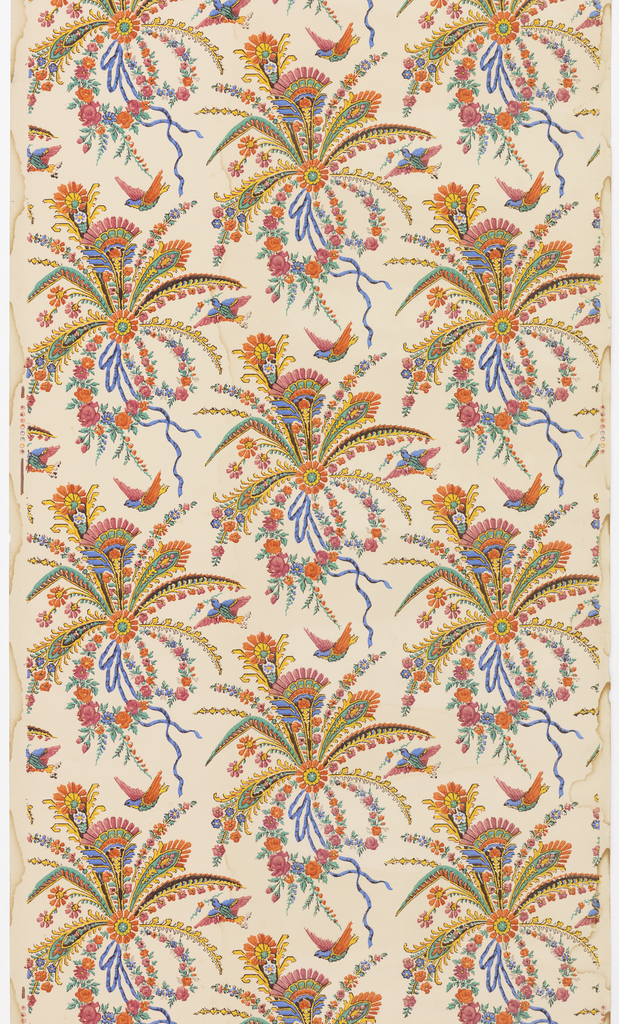Yet another fabulous and festive antique French wallpaper to highlight the missed opportunities inherent in the plain, white walls of our own time. Exuberant bouquets of stylized poppies and peacock feathers are held together by cornflower blue ribbons and festoons of coral colored blossoms. Dainty sparrows in rainbow plumage dart to and fro, adding a few finishing touches to the bouquets of flowers, and giving us the impression that these little birdies are themselves the florists responsible for this happy display of color.
Dated ca. 1850, this sidewall is an early example of machine-printed paper, meaning the colors were applied with an automated roller rather than individually applied with separate woodblocks. Mechanization of the printing process, coupled with the invention of continuous rolls of paper (both of which appeared in the early nineteenth century) meant that elaborate papers such as this were within the reach of a broader consumer base. This paper would have been produced for a mid-market consumer, and was designed to imitate textiles, which were the wallcovering material of choice for some truly elite households. Of course, textiles were also made more widely available by the technological advances of the industrial revolution, but certain luxury varieties remained impractically pricy for the middle class. Thus, wallpaper manufacturers stepped in to fill the demands of those not quite able to invest in fancy fabrics. Wallpapers were also easier to attach to the wall. The pattern of this paper was likely inspired by East Indian textile traditions, which had been appreciated for centuries in Europe by the time this paper was produced. The great Mughal Emperors of India had a special fondness for beautiful gardens, and during their reigns uniquely Indian floral patterns developed and were applied with great skill to textiles.
Anna Rasche is a student in the History of Decorative Arts & Design graduate Program at the Cooper Hewitt, and is a Master’s Fellow in the Wallcoverings Department.
